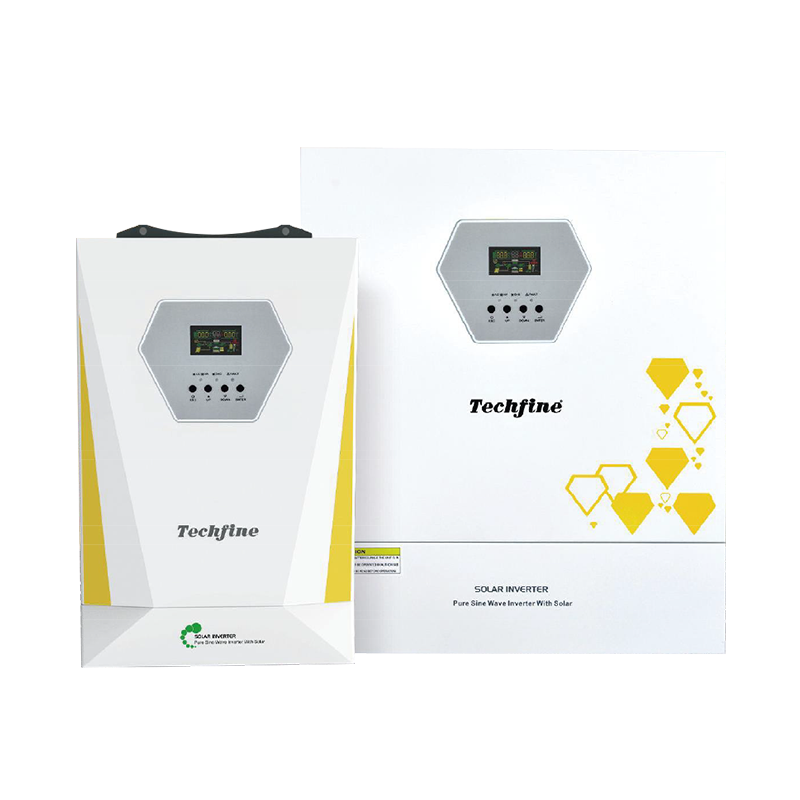
-
[email protected]

-
Building 1, No. 21 Shengfa Road, Lucheng District, Wenzhou, Zhejiang, China



A hybrid battery string storage inverter is a device that plays a critical role in energy systems by managing the flow of electricity between solar panels, battery storage, and the grid. It integrates solar power generation, battery storage, and grid connectivity into a single system. The inverter converts direct current (DC) electricity produced by solar panels or stored in batteries into alternating current (AC) electricity, which can be used by household appliances or sent to the grid.
It can manage the charging and discharging of batteries while optimizing energy flow from solar panels. Additionally, hybrid battery string storage inverters offer features such as load shifting, energy management, and backup power in case of grid failure.

A hybrid battery string storage inverter operates by integrating multiple energy sources into a cohesive system. It typically includes several key components:
Solar Panels: These are the primary source of renewable energy, capturing sunlight and converting it into DC electricity.
Battery Storage System: The inverter stores excess energy produced by the solar panels in batteries. These batteries can be used later when solar generation is insufficient or when grid power is unavailable.
Inverter: The hybrid inverter is responsible for converting DC electricity from the solar panels or batteries into AC electricity, which is suitable for use by home appliances or to be fed back into the grid.
Grid Connection: In the case of surplus energy, the inverter can export excess electricity to the grid, helping to offset electricity costs for the user.
The inverter continuously monitors the energy production, storage, and consumption within the system to ensure that the energy is efficiently utilized. It manages the flow of electricity between the solar panels, battery storage, and grid to big energy savings and improve overall system efficiency.
Hybrid battery string storage inverters offer several advantages for both residential and commercial applications:
Energy Independence: By integrating solar power generation with energy storage, users can reduce their reliance on the grid. The stored energy can be used during periods of low sunlight or when electricity prices are high, increasing overall energy independence.
Backup Power: In case of a power outage, the hybrid inverter can provide backup power using stored energy in the batteries. This ensures that essential systems, such as lights and refrigeration, continue to function even during grid failures.
Optimized Energy Usage: The hybrid inverter optimizes energy usage by efficiently managing the flow of electricity between the solar panels, batteries, and grid. This pilots to improved efficiency and energy savings for the user.
Load Shifting: Hybrid inverters allow for load shifting, which means that energy can be stored during off-peak times when electricity demand is low and used during peak hours when electricity prices are higher. This helps to lower energy costs.
Hybrid battery string storage inverters are used in various applications, ranging from residential homes to commercial facilities. Some common uses include:
Commercial and Industrial Applications: For businesses with high energy consumption, hybrid inverters provide a way to reduce electricity costs by storing energy during off-peak hours and using it during peak demand times. This can be particularly valuable in areas with high electricity rates.
Off-Grid and Remote Locations: Hybrid battery string storage inverters are also used in off-grid systems, providing reliable power to remote locations without access to the main electrical grid. These systems typically rely on solar panels and batteries to ensure continuous power supply.
Emergency Backup Systems: In areas prone to frequent power outages, hybrid inverters offer an effective emergency backup solution. The system can continue to provide power to critical loads, ensuring small disruption to daily activities.
Hybrid battery string storage inverters are an essential component of modern solar energy systems, offering a practical and efficient solution for energy storage and management.
Your email address will not be published. Required field are marked*
